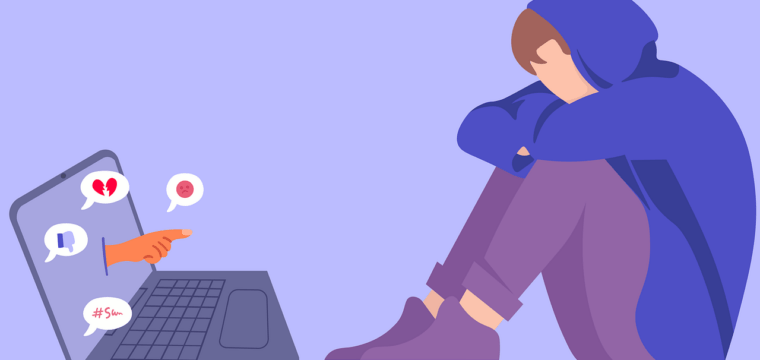AI technologies are reshaping every aspect of society, including the darker side of online behavior. More than ever, it is crucial to recognize how AI tools are being abused in ways that go beyond traditional cyberbullying. From deepfakes that have the ability to distort reality, to pure AI-generated content that spreads misinformation, teenagers are now wielding Thor-like power to harm their peers. This isn’t just an evolution of bullying; some say it’s a psychological game that parents may not yet fully comprehend.
Understanding Cyberbullying in 2024: How Technology Has Evolved
Cyberbullying has always been a constant threat to teenagers, but in 2024, the game has changed. What started as online harassment or even cruel messages has today evolved into a more dangerous paradigm shift. Today’s teens are using updated technology to create a digital hold that’s harder to detect and far more damaging. The misuse of these tools can fabricate videos, fake identities, and even conversations, which allows bullies today to operate under the radar. This leaves parents unaware of how much more sophisticated and harmful bullying has become.
AI Tools Teens Are Misusing: Deepfakes, Generative AI, and More
Today bullies are misusing AI in ways that go beyond what we all can imagine.
Deepfakes, once reserved for Hollywood cinemas, are now being used to create embarrassing fake videos of others. These altered videos make it nearly impossible for victims to defend themselves, as friends, family, and even peers may struggle to distinguish what’s real from what’s fake, causing deepening emotional trauma. This blurs the line between truth and manipulation.
AI-generated content like fake text messages and on-demand social media posts spreads false information almost instantly, damaging reputations in seconds. In addition, we have seen stories of fake screenshots and posts that look 100 percent real. Bullies then can craft false narratives, spreading rumors or framing victims in ways that appear credible.
Even chatbots are being used to automate bullying, bombarding victims with relentless harassment.
These tools are turning digital bullying into a sophisticated psychological attack, leaving teens vulnerable in new, uncharted ways. The emotional damage from these false stories can be devastating, often going unnoticed by their parents and others.
The Psychological Impact on Teenagers
AI-driven cyberbullying leaves deep emotional scars that go well beyond just embarrassment or shame. Victims most often experience heightened anxiety, paranoia, and feelings of isolation, as they struggle to comprehend the issue at hand. This constant stress can lead to long-term mental health issues, including depression and even substance abuse, as teens sometimes turn to unhealthy coping mechanisms. The unknown of these online attacks makes it even harder for parents to intervene, leading to a silent, devastating spiral for many teens.
To add fuel to this serious issue, cyberbullying can severely damage a teen’s sense of self-worth. The feeling of being isolated as fake videos or posts spreads false perceptions of who they are. This manipulation can lead to identity confusion and self-doubt, making it harder for teens to rebuild their social connections and self-esteem.
Why Parents Need to Be Aware of AI Misuse in Cyberbullying
I highly suspect parents may not realize how advanced and damaging internet cyberbullying has become. What was once limited to hurtful comments or images has escalated into in-depth online harassment that can deeply harm a teen’s mental health. Without awareness of these new tactics, parents are left in the dark. They are unable to provide the support their children desperately need. It’s crucial for parents to stay informed and vigilant about AI’s role in online harassment.
Protecting Your Teen from AI-Driven Cyberbullying: Tips for Parents
For parents to truly understand the dangers of online bullying, let’s look at two stats worth noting. First, over 90% of teens in the U.S. believe cyber harassment is a problem. Second, nine out of 10 middle school students have had their feelings hurt online.
This leads to the pressure point…which is parents must take proactive measures to protect their kids over the internet. Start by having open conversations about online behavior and the potential harm of misusing AI tools.
Next, consider installing parental control software that monitors AI-related activities. Parental control software has evolved to monitor more than just screen time, as it can track AI-generated content and suspicious online behavior. These solutions offer a proactive way to safeguard teens from AI-driven cyberbullying.
Educate your teens regularly on identifying when they might be targeted.
Emotional support is just as important. Create an environment where your teen feels safe discussing their experiences. Staying engaged with your child’s online world and general well-being is key to minimizing the impact of these harmful tactics before they escalate further.
The Need for Awareness and Action
AI-driven cyberbullying is more than just a technological shift. It is a growing threat to teenagers’ mental health in this country. More than ever, parents must stay informed about these evolving tactics and take proactive steps to protect their children. Awareness, open communication, and early intervention are essential to combating this hidden, yet harmful, issue.
Guest post by Charles Watson

Leave a Reply
You must be logged in to post a comment.